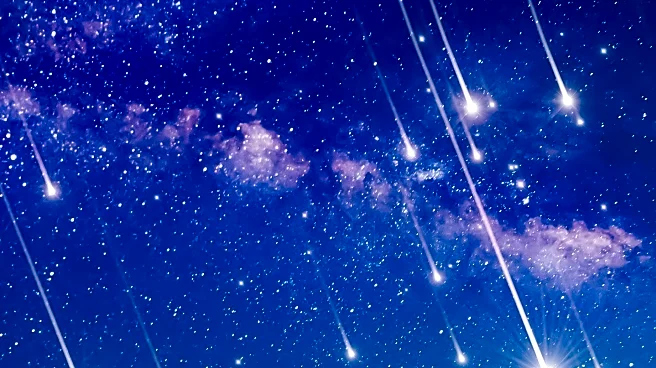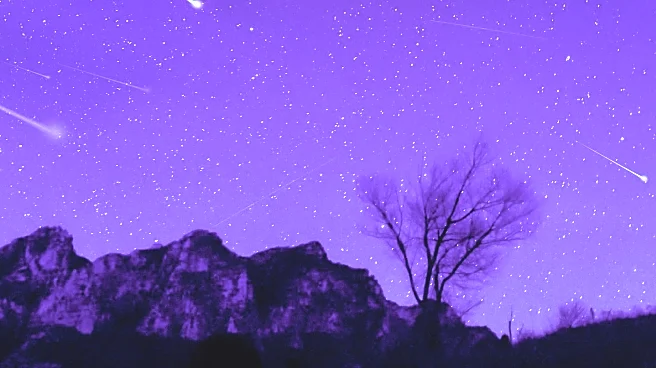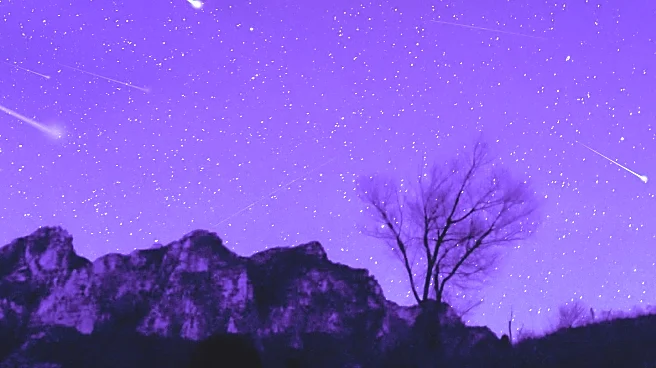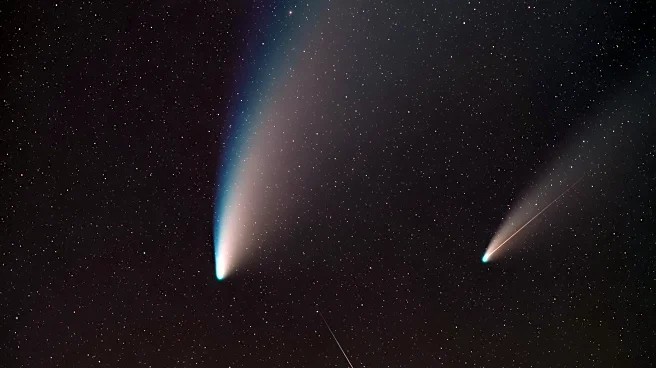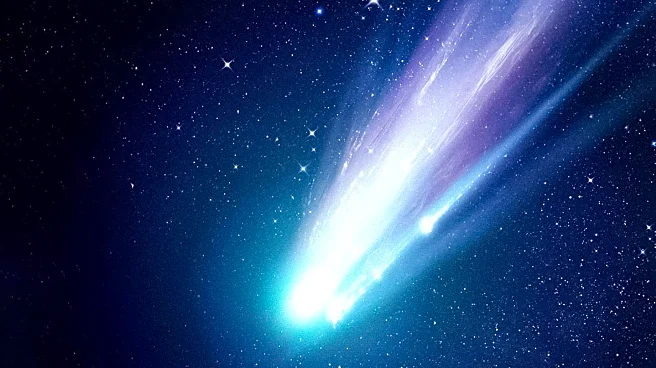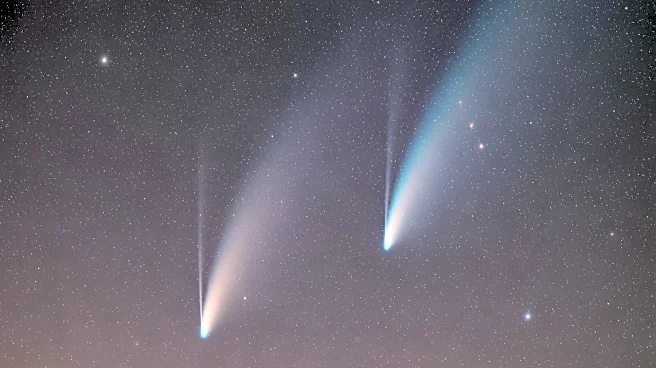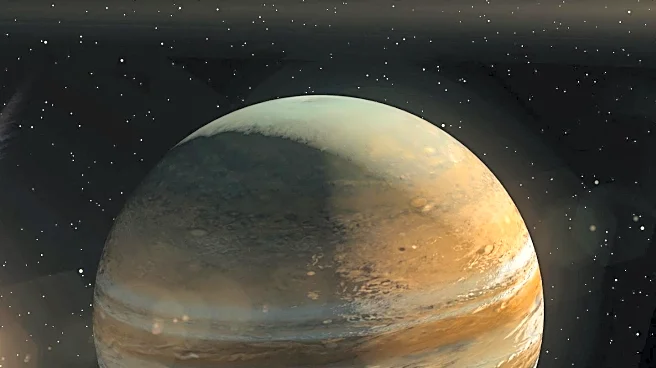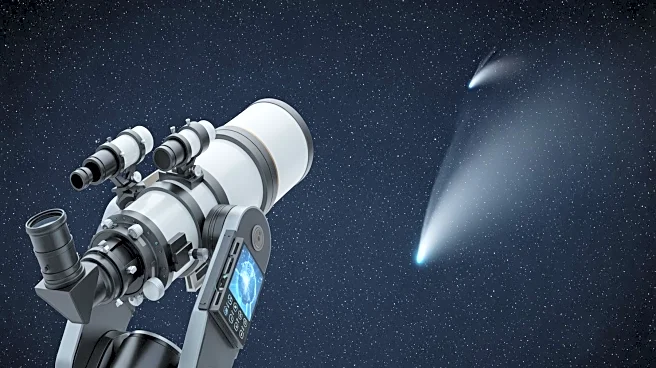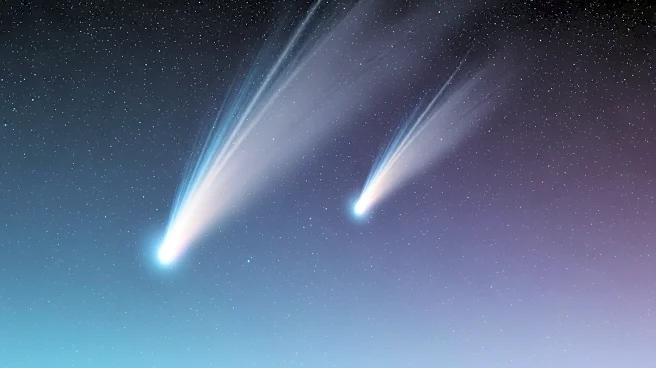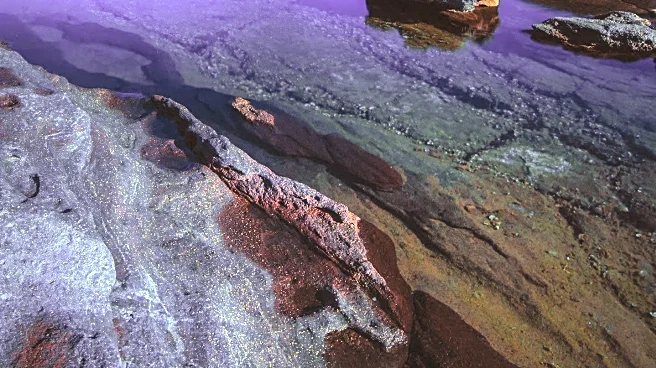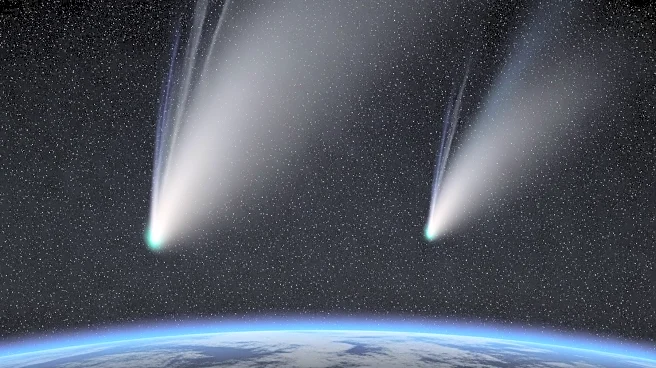What's Happening?
The Orionid meteor shower, an annual event caused by Earth's passage through debris left by Halley's comet, is set to peak between October 21-23. During this period, viewers can expect to see up to 20
meteors per hour under optimal conditions. Additionally, two green comets, C/2025 A6 (Lemmon) and C/2025 R2 (SWAN), will be visible in the night sky. Comet Lemmon will be easiest to spot in the western sky after sunset, while SWAN is best viewed before dawn. Both comets will reach peak brightness around October 20-21.
Why It's Important?
The simultaneous visibility of the Orionid meteor shower and two green comets offers a rare astronomical event, providing opportunities for scientific observation and public engagement with astronomy. This cosmic display can inspire interest in space science and encourage educational activities related to astronomy. The event may also attract tourism to areas with optimal viewing conditions, benefiting local economies. For amateur astronomers and stargazers, this is a unique chance to observe celestial phenomena and deepen their understanding of the universe.
What's Next?
Astronomer Gianluca Masi will host a livestream on October 20 to showcase the comets' approach to Earth, providing a platform for global audiences to experience the event. As the comets gradually fade, interest may shift to other upcoming astronomical events. Educational institutions and science centers might organize viewing parties or workshops to capitalize on public interest. The visibility of these comets could lead to increased sales of telescopes and binoculars, as enthusiasts seek to enhance their stargazing experience.
